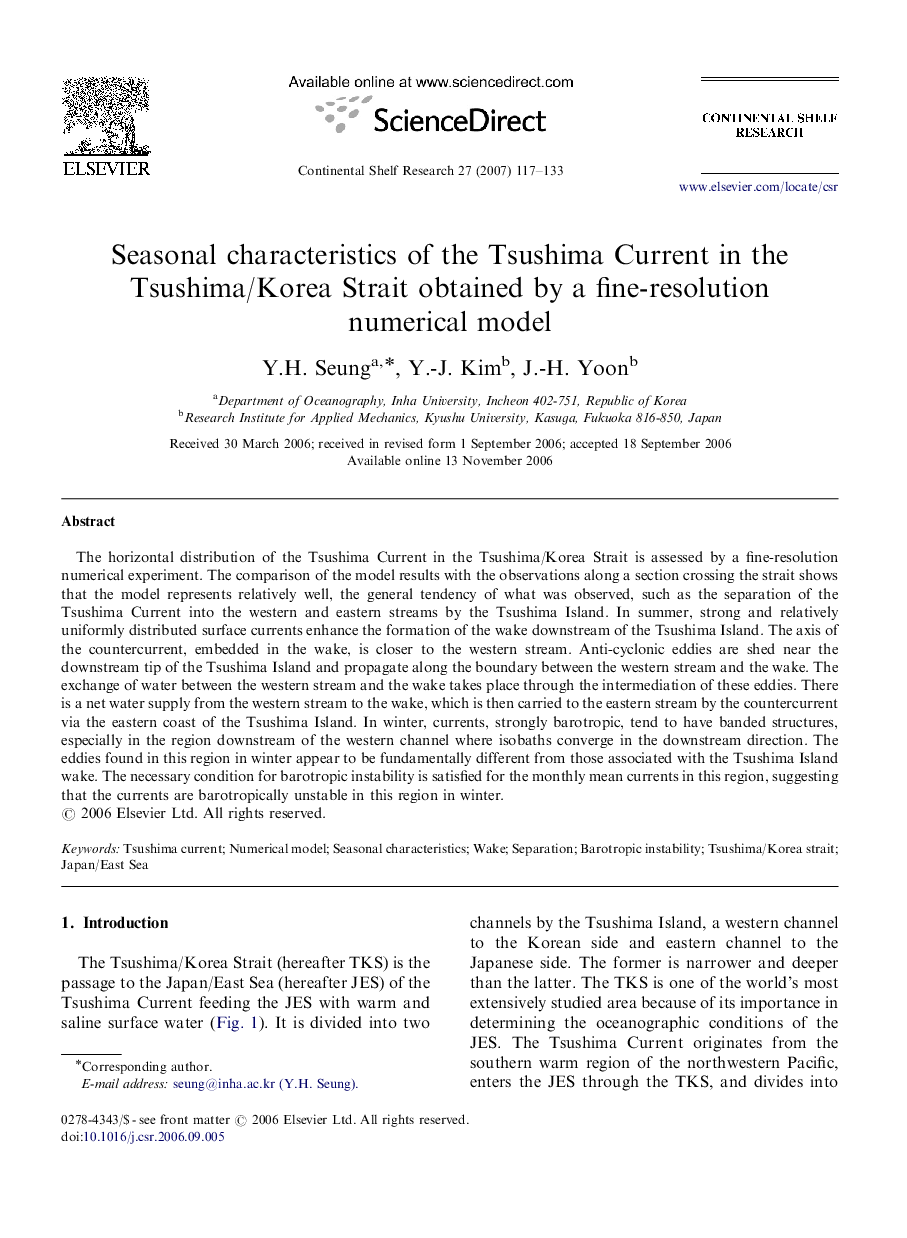| Article ID | Journal | Published Year | Pages | File Type |
|---|---|---|---|---|
| 4533871 | Continental Shelf Research | 2007 | 17 Pages |
Abstract
The horizontal distribution of the Tsushima Current in the Tsushima/Korea Strait is assessed by a fine-resolution numerical experiment. The comparison of the model results with the observations along a section crossing the strait shows that the model represents relatively well, the general tendency of what was observed, such as the separation of the Tsushima Current into the western and eastern streams by the Tsushima Island. In summer, strong and relatively uniformly distributed surface currents enhance the formation of the wake downstream of the Tsushima Island. The axis of the countercurrent, embedded in the wake, is closer to the western stream. Anti-cyclonic eddies are shed near the downstream tip of the Tsushima Island and propagate along the boundary between the western stream and the wake. The exchange of water between the western stream and the wake takes place through the intermediation of these eddies. There is a net water supply from the western stream to the wake, which is then carried to the eastern stream by the countercurrent via the eastern coast of the Tsushima Island. In winter, currents, strongly barotropic, tend to have banded structures, especially in the region downstream of the western channel where isobaths converge in the downstream direction. The eddies found in this region in winter appear to be fundamentally different from those associated with the Tsushima Island wake. The necessary condition for barotropic instability is satisfied for the monthly mean currents in this region, suggesting that the currents are barotropically unstable in this region in winter.
Related Topics
Physical Sciences and Engineering
Earth and Planetary Sciences
Geology
Authors
Y.H. Seung, Y.-J. Kim, J.-H. Yoon,
